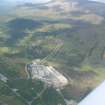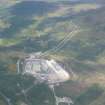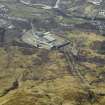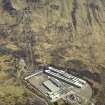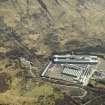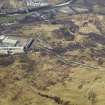Fort William, Lochaber Aluminium Smelter, Power House
Hydroelectric Power Station (Modern)
Site Name Fort William, Lochaber Aluminium Smelter, Power House
Classification Hydroelectric Power Station (Modern)
Alternative Name(s) North British Aluminium Co; Fort William, Aluminium Works; Lochaber Hydroelectric Scheme
Canmore ID 281679
Site Number NN17NW 16.01
NGR NN 12766 75112
Datum OSGB36 - NGR
Permalink http://canmore.org.uk/site/281679
- Council Highland
- Parish Kilmallie
- Former Region Highland
- Former District Lochaber
- Former County Inverness-shire
NN17NW 16.01 12766 75112
Publication Account (2007)
Lochaber Hydro-Electric Works
(Institute Civil Engineers Historic Engineering Works no. HEW 1434)
The Lochaber Power Company was established by Act of Parliament in 1920 to produce aluminium using electric smelters. The company was authorised to develop a catchment area of 303 square miles in the vicinity of Ben Nevis which had, in places, a rainfall of 160 in. and was admirably
suited for the site of a hydro-electric scheme.
The runoff was collected in two reservoirs, Loch Laggan and Loch Treig, connected by a tunnel 23.4 miles long and 15 ft diameter. The supply of water was supplemented by the diversion of the upper waters of the Spey into Loch Laggan from a dam 900 ft long and 30 ft high, built 2 miles above Laggan Bridge.
The most remarkable feature of the scheme was the construction of a pressure tunnel 15 miles long beneath Ben Nevis, from Loch Treig to the entry with steel pipes situated 600 ft above the power station at Fort William.
In driving the tunnel, four vertical access shafts were sunk and seven horizontal adits driven to allow 22 separate working faces, all in solid rock. The tunnel has a roughly horseshoe cross-section with an equivalent diameter of 15 ft. Eleven streams on Ben Nevis were dammed and their flows taken into the tunnel through three construction shafts adapted for the purpose.
The tunnel drive began in 1926 and was completed in1930. The work required the construction of a temporary hydro-station to power construction equipment, an extensive network of 3 ft narrow gauge railway to transport men and materials, and a reinforced-concrete pier 200 ft long on Loch Linnhe which later became permanent. At the height of the work 3000 men were employed. The consulting engineer was William Halcrow and the main contractor, Balfour Beatty & Co. Ltd.
R Paxton and J Shipway, 2007.
Reproduced from 'Civil Engineering heritage: Scotland - Highlands and Islands' with kind permission from Thomas Telford Publishers.
Field Visit (2010)
The powerhouse drew on water from the three main dams and various other inlets on the scheme (see separate records) to drive five 6,800 kW generators. These were set into a deep rock excavation to get the turbines as close to sea level as possible. Lochaber power scheme was a significant development in terms of scale and innovation over the previous BAC scheme at Kinlochleven. The output from the powerhouse was not exceeded until 1950 at Sloy. The powerhouse is on a large scale with a number of good design features including a pilastered rear elevation, mural panels and corbelled band courses. The powerhouse forms part of one of the most significant engineering projects of the twentieth century, using water from Laggan, Spey and Treig reservoirs which is piped under the flanks of Ben Nevis. J R Hume, 1977; P L Payne,1988; E Wood, 2002; Concrete and Constructional Engineering IV (1909); Alcan, n.d.
http://canmore.rcahms.gov.uk/en/site/281679/details/fort+william+lochaber+aluminium+smelter+power+house/

















